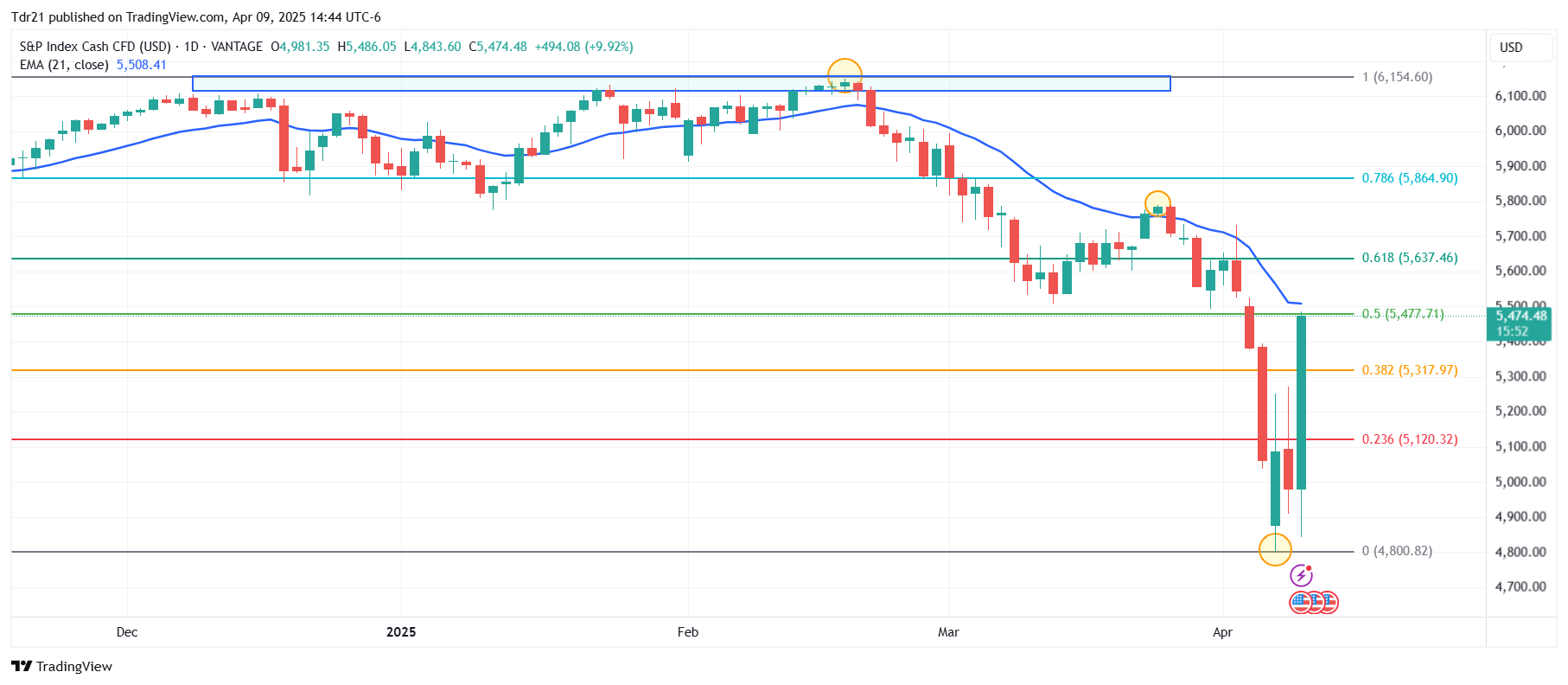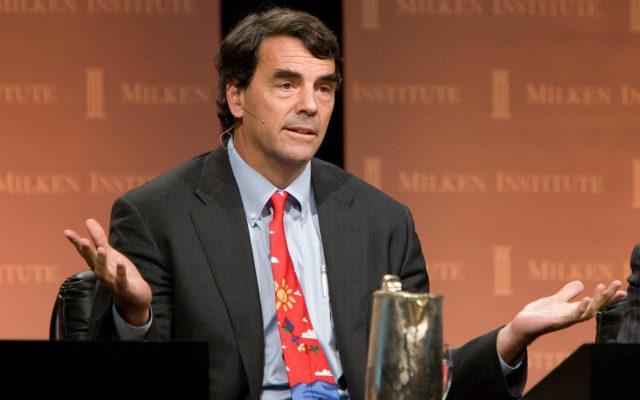- The S&P 500 stock index rebounds 9.78% today, reaching maximums of April 3 in 5,486.
- Donald Trump announced a 90 -day break with immediate effect for reciprocal tariffs.
- The Minutes of the Federal Reserve glimpse inflationary risks, as well as slower economic growth.
- The commercial war between China and the US is intensified by imposing a tariff rate of 125% to original goods of the Asian country.
The S&P 500 reacted upward from April 7 in 4,843 where it found aggressive buyers who took the index to a maximum not seen from April 3 in 5,486. At the moment, the S&P 500 is quoted at 5,463, winning 9.83% daily.
The tariff suspension drives the S&P 500 to a maximum of a week
The president of the United States, Donald Trump, established a 90 -day break in relation to reciprocal tariffs, immediately effective.
After this news, the financial markets resumed the upward perspective, promoting a rebound of 9.78% in the S&P 500, uploading 495 points and reaching a maximum not seen from April 3 in 5,486.
However, commercial tensions intensified when announcing a 125% tariff to China import products, in response to the 84% rate imposed by the Asian country to US goods.
On the other hand, the Federal Reserve minutes showed their concern about greater inflationary risks that could be more persistent than expected.
In the same tune, the president of the Federal Reserve of St. Louis, Alberto Musalem, said that tariffs will hinder the work to make changes in interest rates in the short term.
The look of investors will be centered tomorrow on the publication of the United States consumer price index. The consensus expects to be located at 2.6% annualized, slightly below the 2.8% observed in the previous period.
Levels to be considered in the S&P 500
The S&P 500 established a short -term support given by the minimum of April 7 in 4,802. To the north, the closest resistance is located in 5,790, maximum of March 25. The next important resistance is observed in 6,150, pivot point of February 19.
S&P 500 DAILY GRAPH

S&P 500 FAQS
The S&P 500 is a very often stock index that measures the yield of 500 public companies and is considered a wide measure of the US stock market. The influence of each company on the calculation of the index is weighted based on stock capitalization. This is calculated by multiplying the number of bought shares of the company for the price of the action. The S&P 500 index has achieved impressive yields: 1.00 $ invested in 1970 would have produced a yield of almost $ 192.00 in 2022. The average annual profitability since its creation in 1957 has been 11.9%.
Companies are selected by committee, unlike other indices included in established standards. Even so, they must fulfill certain eligibility criteria, the most important of which is stock market, which must be equal to or greater than 12.7 billion dollars. Other criteria are liquidity, domicile, stock capitalization, sector, financial viability, quotation time and representation of the sectors of the United States economy. The nine largest companies in the index represent 27.8% of the stock market capitalization.
There are several ways to operate with the S&P 500. Most of the Stred Betting retail runners and platforms allow operators to use contracts per difference (CFD) to make bets on the price direction. In addition, indexed funds, investment funds and quoted funds (ETF) that follow the price of the S&P 500 can be purchased. The most ETF liquid is the ETF of the London Stock Exchange. The most ETF liquid is the State Street Corporation Spy. The Chicago Mercantile Exchange (CME) offers futures contracts on the index and the Chicago Board of Options (CMOE) offers options, as well as ETF, ETF Inverse and ETF leverage.
There are many factors that promote S&P 500, but mainly it is the aggregate performance of the companies that compose it, revealed in their reports of quarterly and annual results. American and world macroeconomic data also contribute, since they influence investors’ confidence, which is positive drives profits. The level of interest rates, set by the Federal Reserve (FED), also influences the S&P 500, since it affects the cost of credit, which is largely depending on many companies. Therefore, inflation can be a determining factor, as well as other parameters that influence the decisions of the Federal Reserve.
Source: Fx Street
I am Joshua Winder, a senior-level journalist and editor at World Stock Market. I specialize in covering news related to the stock market and economic trends. With more than 8 years of experience in this field, I have become an expert in financial reporting.







